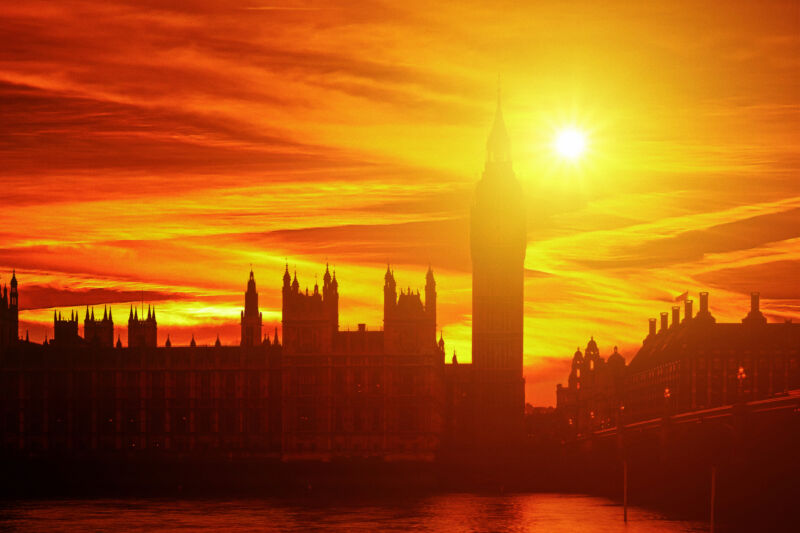
Enlarge (credit: Peter Zelei Images)
Early last week, the UK experienced something it is very much not known for—extremely hot and dry weather. The heatwave shattered all-time national records, surpassing a 38.6° C (101.5° F) mark set in 2019 by crossing 40° C (104° F) for the very first time.
The scientists behind the World Weather Attribution project use a standardized (and peer-reviewed) method to rapidly analyze weather extremes like this in the context of climate change. While there is more nuance to this science than saying an event should or shouldn’t be blamed on climate change, we can say something about the role that climate change plays. And for heatwaves, that role is often quite clear: In a warming world, the statistics of heatwaves will necessarily shift toward hotter temperatures.
The analysis of this event involves two complementary steps. First, the historical data is used to calculate the rarity of this extreme weather event in today’s climate—and what it would have been before the world warmed by about 1.2° C (2.2° F). Second, large collections of climate model simulations with and without human-caused warming are similarly examined for trends in the type of regional weather pattern that produced the event.
Read 9 remaining paragraphs | Comments
Ars TechnicaContinue reading/original-link]




